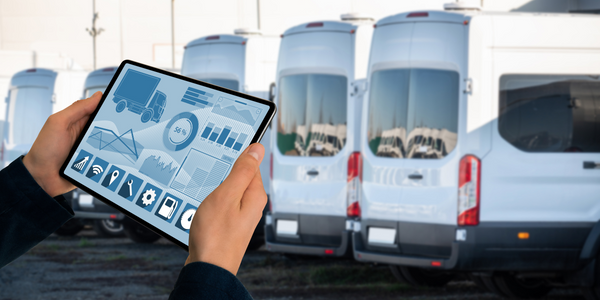Download PDF
Raben Group centralizes transport management to handle critical capabilities with BluJay’s platform
Technology Category
- Functional Applications - Transportation Management Systems (TMS)
- Networks & Connectivity - RFID
Applicable Functions
- Logistics & Transportation
- Warehouse & Inventory Management
Use Cases
- Fleet Management
- Track & Trace of Assets
- Supply Chain Visibility
Services
- System Integration
- Software Design & Engineering Services
The Challenge
Raben Group, a logistics service provider operating in multiple European countries, faced the challenge of managing a complex and growing transportation network. The company needed a scalable, multimodal transportation management solution that could integrate various business units and systems to provide visibility across the entire operation. Additionally, Raben required support for different languages, currencies, and time zones to improve logistics operations on an international scale. The company also aimed to operate on a hub-and-spoke basis to support complex planning processes.
About The Customer
Raben Group is a well-established logistics service provider with over 80 years of experience in the industry. The company operates throughout Europe, including the Czech Republic, Estonia, Holland, Germany, Latvia, Lithuania, Poland, Slovakia, and Ukraine. With a workforce of over 9,500 employees, Raben offers a wide range of services, including full logistics, warehousing, international and national distribution, fresh-products logistics, automotive industry forwarding, and sea and air freight. The company boasts 1,150,000 square meters of diversified warehousing area, several dozen terminals across Europe, and approximately 6,000 means of transport at its disposal. Raben's extensive network and comprehensive service offerings make it a significant player in the logistics industry.
The Solution
Raben Group selected BluJay Solutions' Transportation Management platform to address its logistics challenges. The platform provided a centralized, flexible solution to manage transportation and logistics operations across multiple countries and business units. BluJay's TMS offered comprehensive functionality, including support for multiple languages, currencies, and time zones, as well as real-time visibility on goods and items throughout the network. The phased implementation approach ensured minimal disruption to operations, allowing each business unit to be integrated individually. The platform also facilitated the preparation of documents and freight labels through RFID integration, ensuring each consignment received a unique bar code identification number. This centralized system replaced the previously disconnected systems, streamlining operations and improving efficiency.
Operational Impact
Quantitative Benefit
Related Case Studies.

Case Study
IoT Applications and Upgrades in Textile Plant
At any given time, the textile company’s manufacturing facility has up to 2,000 textile carts in use. These carts are pushed from room to room, carrying materials or semi-finished products. Previously, a paper with a hand-written description was attached to each cart. This traditional method of processing made product tracking extremely difficult. Additionally, making sure that every cart of materials or semi-finished products went to its correct processing work station was also a problem. Therefore, the company desired an intelligent solution for tracking assets at their factories. They also wanted a solution that would help them collect process data so they could improve their manufacturing efficiency.

Case Study
Remote Temperature Monitoring of Perishable Goods Saves Money
RMONI was facing temperature monitoring challenges in a cold chain business. A cold chain must be established and maintained to ensure goods have been properly refrigerated during every step of the process, making temperature monitoring a critical business function. Manual registration practice can be very costly, labor intensive and prone to mistakes.

Case Study
Goldcorp: Internet of Things Enables the Mine of the Future
Goldcorp is committed to responsible mining practices and maintaining maximum safety for its workers. At the same time, the firm is constantly exploring ways to improve the efficiency of its operations, extend the life of its assets, and control costs. Goldcorp needed technology that can maximize production efficiency by tracking all mining operations, keep employees safe with remote operations and monitoring of hazardous work areas and control production costs through better asset and site management.

Case Study
IoT-based Fleet Intelligence Innovation
Speed to market is precious for DRVR, a rapidly growing start-up company. With a business model dependent on reliable mobile data, managers were spending their lives trying to negotiate data roaming deals with mobile network operators in different countries. And, even then, service quality was a constant concern.

Case Study
Buoy Status Monitoring with LoRa
The Netherlands are well-known for their inland waterways, canals, sluices and of course port activities. The Dutch Ministry of Infrastructure indicates that there are thousands of buoys and fixed items in and near water environments that would profit from IoT monitoring. One of the problems with buoys for example, is that they get hit by ships and the anchor cable breaks. Without connectivity, it takes quite some time to find out that something has happened with that buoy. Not to mention the costs of renting a boat to go to the buoy to fix it. Another important issue, is that there is no real-time monitoring of the buoys at this moment. Only by physically visiting the object on the water, one gains insight in its status.





